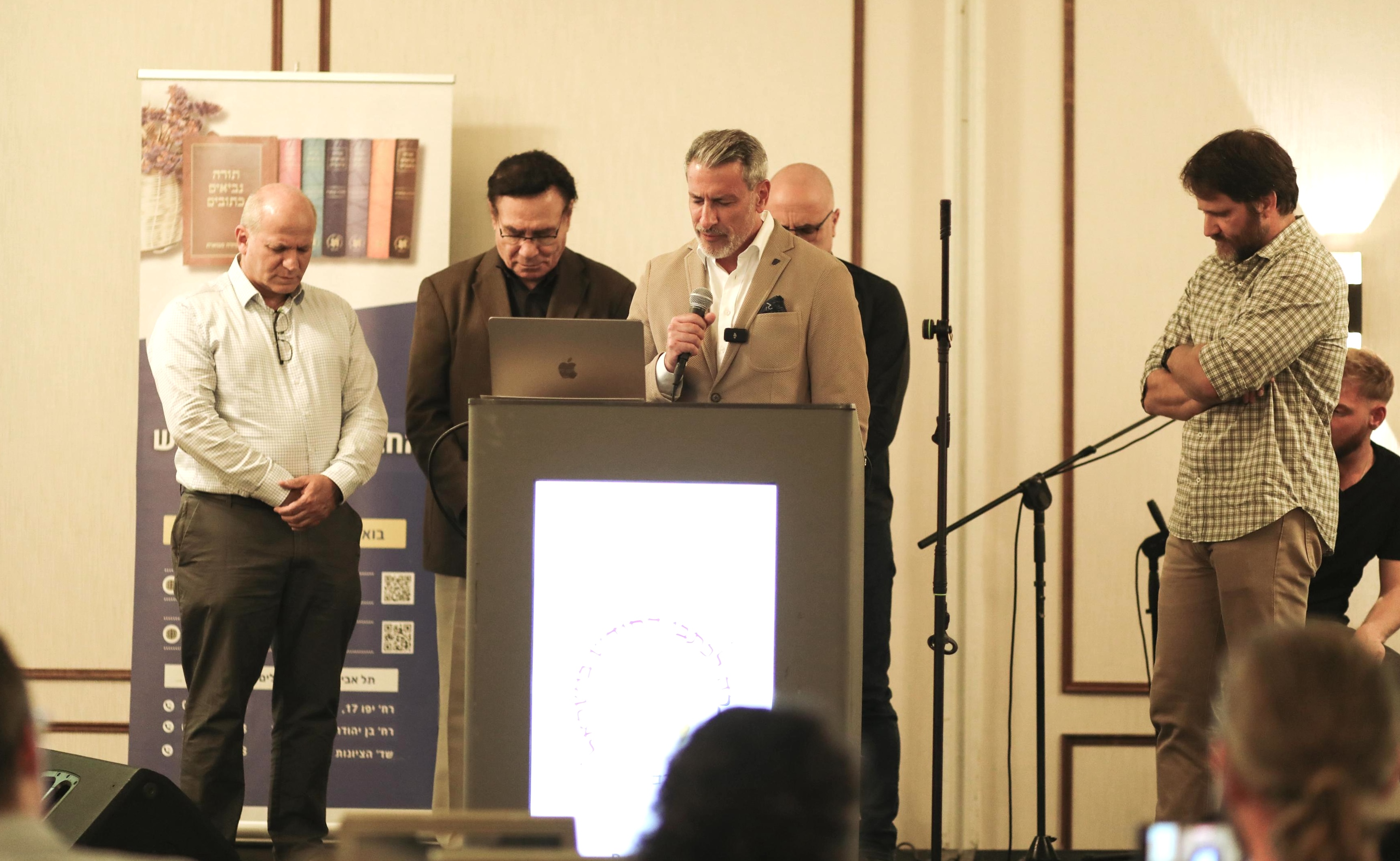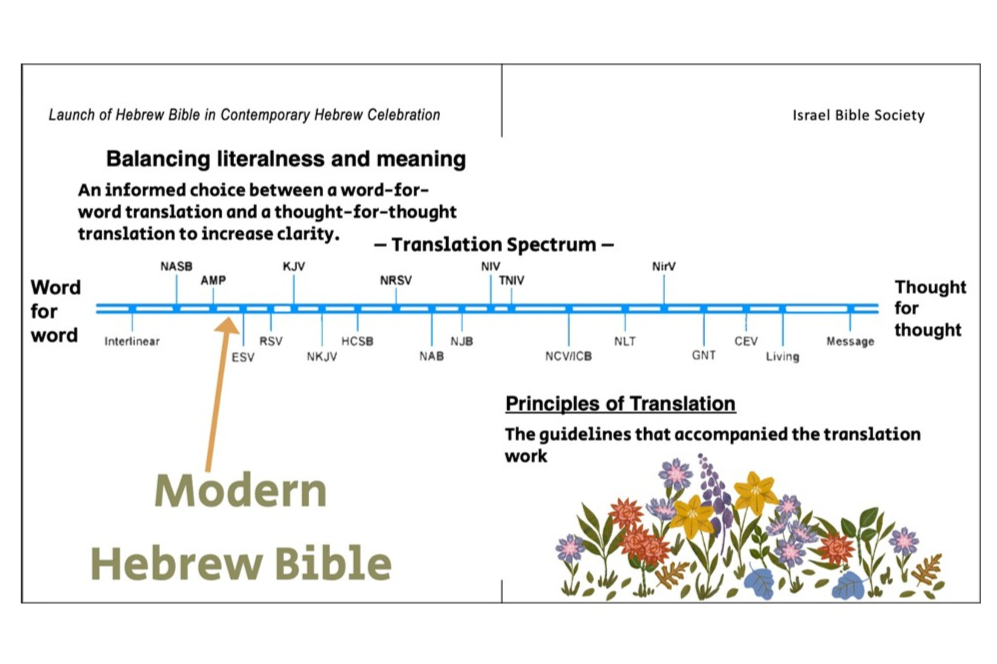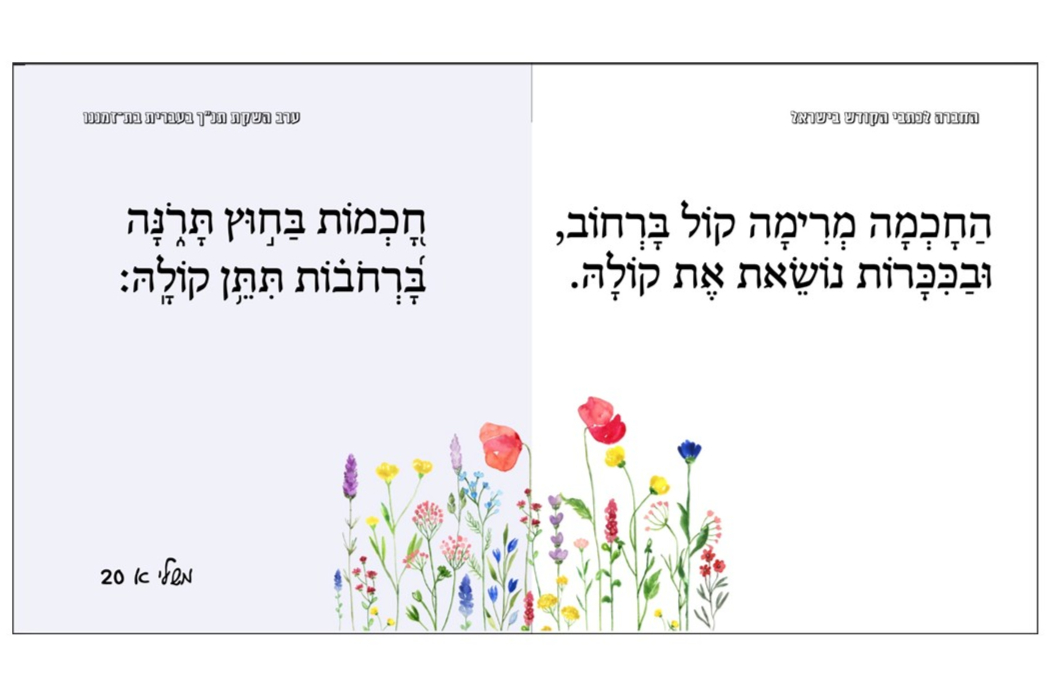New Hebrew Bible in Israel pairs original text with a modern Hebrew translation to help Israelis reconnect with their ancient texts
After years of work, the Bible Society in Israel has completed an intralingual translation

Recently, the Bible Society in Israel celebrated the successful completion of a years-long, but surprising project; the translation of the Hebrew Bible from Biblical Hebrew into Modern Hebrew.
The Bible is quite likely the most important book in human history, even apart from considerations of its spiritual value.
The texts of Scripture, both Old and New Testament, have changed countless lives, even shaping the histories of nations and Western culture.
It is the foundation of what is often referred to as Judeo-Christian culture and values, which have had a significant impact in shaping the legal foundations of many modern nations and the laws regarding human rights.
The Bible has also dramatically shaped Western culture through the arts, as medieval and Renaissance artists often looked to the Biblical texts for inspiration for some of the West’s seminal masterpieces.
The preservation of the Old Testament texts is seen by many as a miracle in and of itself, with the discovery of the Dead Sea Scrolls highlighting the incredible fidelity of the Hebrew scribes in copying the Scriptures generation after generation. The scrolls, which date from the period before Yeshua (Jesus), show only minor differences compared to the Masoretic texts copied by medieval Jewish scribes, based on received manuscripts from the early Rabbinic period.
The gifting of a Torah scroll to a synagogue is an occasion of much joy and ceremony in Jewish communities, keeping alive the tradition of reading the Scriptures, which has persisted for millennia.
And yet, despite the crucial significance of the Hebrew Bible (Old Testament) to the Jewish world, newcomers to Israel are often surprised to discover a remarkable fact; native speakers of Modern Hebrew often have difficulty reading the Hebrew Bible and understanding it.
Despite serving as the foundation of Jewish faith, culture, creativity, language and identity, its language, Biblical Hebrew, poses a challenge to the people living in the land that gave it birth.

Over the centuries, many translations of the Hebrew Scriptures have been made. Starting in the ancient world, a Greek translation, called the Septuagint, was possibly the first translation. Later, the translation of Onkelos into Aramaic, demonstrated the demographic and linguistic changes in the Jewish people, as Hebrew stopped being the primary spoken language. Other translations, into a variety of languages followed: Latin, Arabic, Yiddish, and the modern translations spurred by the Reformation and the Enlightenment. Some of these translations were intended to serve Jewish people who were not familiar with biblical Hebrew.
However, with the return of the Jewish people to Israel, a majority of Jews today have some knowledge of the Hebrew language. Despite that, Biblical Hebrew is still a challenge, even for native Hebrew speakers. The Hebrew language has changed significantly from biblical times to the present day, and many words have also changed their meaning, leading the biblical text to be only partially comprehensible to the modern reader.
Prof. Yosef Klausner, a professor of Hebrew literature, wrote in the introduction to his commentary on Amos (in Hebrew):
“The Bible, like any ancient book, is difficult to read fluently: it needs interpretations and explanations, that is, to study instead of reading. There are many verses... that are difficult to understand and various commentators have struggled with them. And a book that requires analysis and explanation and that is impossible to understand directly, without various interpretations, which are usually difficult for the ordinary reader to decide between – such a book cannot be read by the reader who will taste the sweetness of its words and the beauty of its illustrations directly and will derive real spiritual pleasure from them.”

In another book, Prof. Klausner recounts his personal struggle with Biblical Hebrew while attempting to read the Book of Job during the days of shiva (mourning) for his mother. Finding it difficult and challenging to read, he turned to the French translation and later said, “Linguistically, everything was clear and self-evident here [in French]. I was able to focus my thoughts on the idea. I could be fascinated by the exaltation of the discussion, and find solace in my misery.”
If a professor of Hebrew literature found Biblical Hebrew challenging, imagine how ordinary Modern Hebrew speakers feel.
The Bible Society in Israel addressed this challenge by creating a professional translation of the Bible from Biblical Hebrew to Modern Hebrew. However, this is not a translation in the usual sense, but rather it is an intralingual translation from one stage of Hebrew to later stage, much as later English translations have attempted to modernize and update the English of the 1611 King James translation into modern English.
According to the Bible Society in Israel, “The Bible in Modern Hebrew" is meant to be a faithful copy of the original text. Care was taken to keep the vocabulary and flow of the original text as much as possible, to preserve the personal style of the original authors. The translation addresses the grammatical differences between Biblical Hebrew and Modern Hebrew, while working to preserve the poetic, dramatic, and sacred feel of the original text.

At the launch celebration for the completed project, there was a clear atmosphere of excitement, as many who dedicated time and effort to the project, finally saw the fruit of their labors. There was also a clear sense of expectation, as the restoration of the Bible to a book which the average Hebrew reader can understand and appreciate without needing to rely on linguistic scholars poses the promise of a dramatic change in Israeli and Jewish culture.
If the release of the Bible in the common languages of Europe produced a reformation in the Christian world of Europe, freeing the interpretation of the Scriptures from the domain of a limited group of experts, the Bible Society in Israel hopes a similar revolution can happen in Israeli society, as people are able to read and understand the text for themselves.
Yair Frank, head of the translation project, said, “The text in contemporary Hebrew preserves the spirit of the original, its faith, cultural and historical meanings, while using a fluid and clear contemporary language. We hope that it will be an excellent tool in the hands of anyone who wishes to read and understand the Bible.”
You can purchase the Modern Hebrew Old Testament here.
You can purchase the Modern Hebrew Bible here.

Want to help more people find our reporting from Israel? Leave a quick Google review of our website here.

J. Micah Hancock is a current Master’s student at the Hebrew University, pursuing a degree in Jewish History. Previously, he studied Biblical studies and journalism in his B.A. in the United States. He joined All Israel News as a reporter in 2022, and currently lives near Jerusalem with his wife and children.













